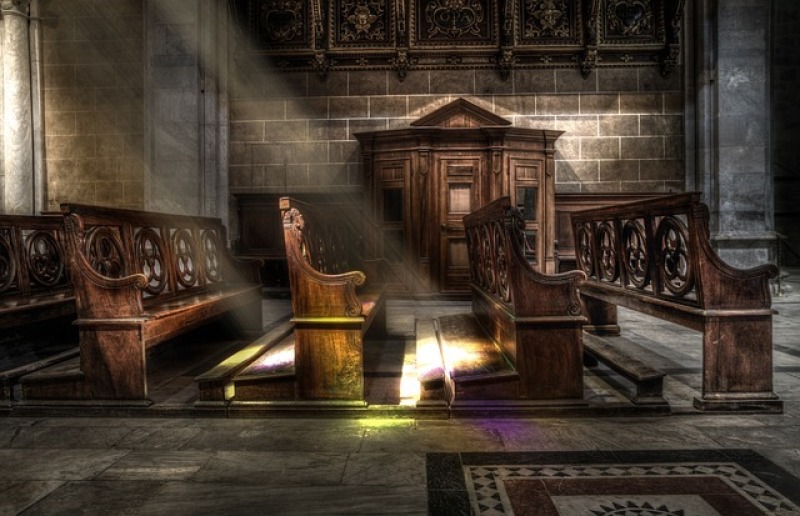
Two miles from the shore of Lake Erie, St. Mary Church held its final mass after 136 years. Between the stained-glass windows, the pews were full of attendees who had spent a lifetime creating memories.
Many, including 94-year-old Janis Robison, had participated in the church’s community their entire lives, attending weddings, baptisms, and other important events. The church’s closing marked a poignant and emotional conclusion for its long-time members.
Declining Church Attendance and Changing Social Landscape Leads to Church Closures in Ohio
Due to the steadily declining population in the area and financial strains, St. Mary’s Church, the ninth to close in the Youngstown Diocese in the previous two years, held its final mass. According to WYSO, during the COVID-19 pandemic, the parish ceased holding mass at St. Mary’s and combined services with a nearby church for better hygienic conditions.
The success of the action led to the decision to make the collaboration permanent. The closure will free up money for other ministries, such as the parish’s soup kitchen and the potential sponsorship of a Ukrainian family, according to Nicholas Perkoski, the diocesan pastoral associate for the parish. Although the decision to close the church was challenging, it has become more typical among Christian congregations in Ohio.
As the state of Ohio experiences a significant drop in attendance and a shifting social climate, churches all over the state are closing their doors. The Cincinnati Archdiocese recently consolidated nearly three-quarters of its parishes due to a 20% drop in weekly church attendance over a decade.
The Diocese of Columbus plans to close 19 churches this summer. The problem is not limited to Catholic churches, as declines are also being seen among Baptists, Methodists, Lutherans, and Episcopalians.
According to the article shared in Statehouse News Bureau, baptist pastor and Eastern Illinois University professor of political science Ryan Burge attribute the trend partly to politics and the widening gap between religious Republicans and secular Democrats. He also cites the rise of social media and a cultural shift away from joining social groups as contributing factors to the decline. Within the next 20 years, according to Burge, there will be a significant shift in American religion, with thousands of empty churches and entire denominations closing their doors.
Also Read: Church Founded In 1848 Closing Due To COVID: ‘The Pandemic Killed Us’
The Continued Decline of Christianity
As congregations decline and younger generations drift away from Christianity, researchers have noticed a sharp rise in closing churches across the US. This trend has most likely been accelerated by the Covid-19 pandemic. According to the Article in The Guardian, the number of Protestant churches in the US did not increase in 2019, with roughly 4,500 of them closing and only 3,000 new ones opening. According to experts, closures have since continued at a similar or higher rate.
Despite the pandemic’s influence, there has been a longer-running, broader trend of people drifting away from religion. According to Lifeway Research, seven out of ten young adults who regularly attended church in high school stopped doing so. Logistics problems and the perception of judgmental or hypocritical behavior from church members are two causes of this. A quarter of those who left the church it was also stated that they disagreed with its political and social stances.
Related Article: Final Farewell: 16 Remaining Nuns Close the Door on 140-Year History of Mount Angel Monastery in Oregon
